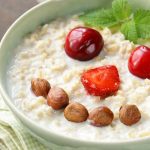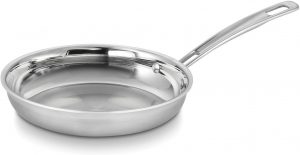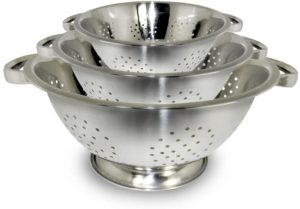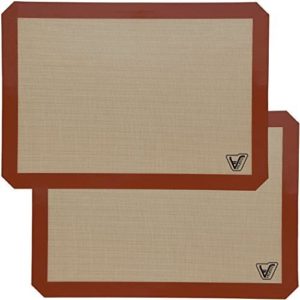I live on oats. After I was diagnosed with a gluten allergy, I started eating large quantities of oats every day. This got me wondering whether oatmeal is good for you.
The short answer is that yes, oatmeal is good for you. But, not all oats are created equal. In this article, we delve into the health benefits of the humble oat and explain why and how you should include it in your family’s diet.
As with a lot of healthy foods, some methods of preparation are better for you than others.
Before moving on to the benefits of oatmeal, we will explore oats themselves and the different types you can find in the grocery store. Food companies process oats in several ways. This can affect their cooking method and health benefits.
What Are Oats?
Oats are a grain, the edible seeds of the Avena sativa plant, and it’s believed that they originated in Asia. Initially cultivated thousands of years ago as animal feed and for medical purposes, they grew to be an important food source for people.
Quick History of Oats and Oatmeal
The ancient Greeks and Romans looked down on the oat, thinking it a weed that took up valuable space in their fields of wheat and other grains. It found its way into animal food, but little else.
We can credit the Scots for the popularity of oats and oatmeal. Wheat didn’t grow well in the harsh climate of Scotland, so hardier crops like oats and barley became staples.
Oats came to the Americas with European colonists but remained an animal feed. Ferdinand Schumacher, a German immigrant in Ohio, first popularized their use as food in the mid 19th century.
Breakfast cereals skyrocketed in popularity in the 19th century with the rise of the middle class. After Schumacher’s factory burned down, Henry Parsons Crowell took advantage of the demand for oats and founded what became the Quaker Oats Company, selling his quick oats nationwide.
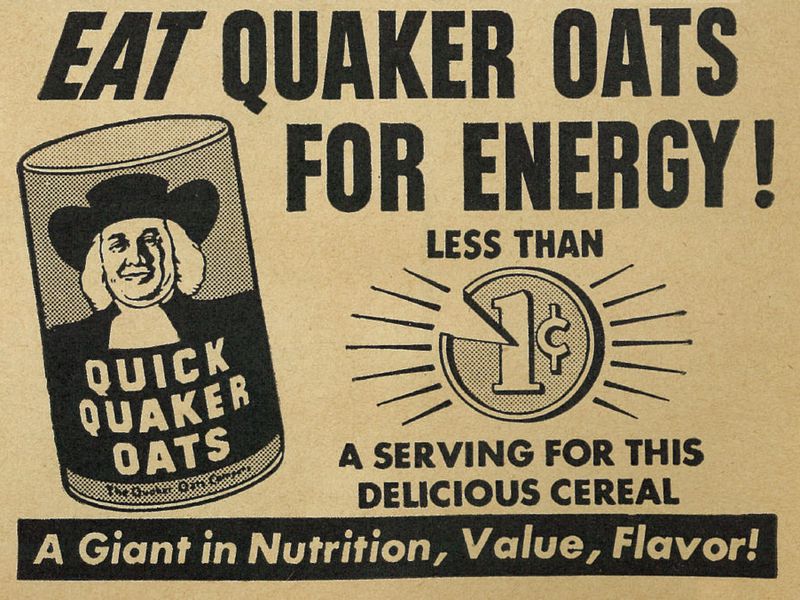
Organic Oats
“Almost three-quarters of food samples tested showed higher glyphosate levels than what the group’s scientists believe to be protective of children’s health,” reported the Environmental Working Group in 2018. This is the same poison used in Roundup’s weed killer. The World Health Organization confirmed these findings.
By choosing organically grown oats, you can protect your family from these pesticides.
Different Types of Oats
If you check out the oats available at your local grocery store, you will be likely to find a variety. There are groats, rolled, quick or instant, steel cut and more. These all come from the same seed but are processed differently.
The Groat
Freshly harvested oat grains are covered with a hull that you cannot digest. Milling removes the hull, leaving the whole oat grain known as the groat. When cooked in their groat form, oats remain separate and have a nutty flavor with a chewy texture, similar to brown rice.
Steel-Cut Oats
One of the traditional methods of processing oats cuts the groat into two or three pieces. Steel-cut oats, also known as Irish or coarse-cut oats, are much easier to cook than groats. But you need to use more water when preparing them compared to oats processed in other ways.
Steel-cut oats are the healthiest of all processed oats. With the higher water ratio, a similar-sized serving contains fewer calories. Because they contain the whole groat and the processing is minimal, they take longer to digest, thereby reducing hunger.
The downside to steel-cut oats is their longer cooking time. You can reduce this by soaking the oats in water overnight in the refrigerator.
Scottish Oats
Similar to steel-cut oats, Scottish oats are stone ground instead of cut. They contain the entire groat and have the same nutrients as steel-cut but result in a creamier oatmeal. The extra processing makes them easier to digest, so you won’t feel as full for as long as you would with steel-cut oats.
Rolled Oats
Most oats prepared for oatmeal are steamed after harvest, rolled into flakes, and then dried. These extra steps drastically reduce the cooking time and make them much easier for the body to digest. Eating the same amount of rolled oats, however, will not keep you feeling full as long. This is the form of oats traditionally used to make porridge.
Quick or Instant Oats
Steamed longer and rolled thinner, instant oats absorb water quickly but offer the nutrition of the oat in an easily digestible form resulting in the shortest feeling of fullness.
Check the label of any package of instant oats you purchase. Many varieties come flavored with additional salt and sugar.
So, What Is the Healthiest Oatmeal?
As with most whole grains, the less processed the oat is, the longer it will take your body to absorb the nutrients. When cooked, the oat groats themselves remain separate and don’t form an oatmeal. Steel-cut oats are the least processed variety and make them the healthiest — as long as you keep added sugar to a minimum.

Health Benefits of Oatmeal
Oatmeal is rich in several essential nutrients such as thiamine, magnesium, phosphorus and zinc, as well as being a great source of fiber, both soluble and insoluble. Researchers have found many health benefits related to eating oatmeal for heart health, weight loss, and more.
To get the most benefit from oatmeal, make it with steel-cut oats. More processed varieties have similar nutritional value, but the slow digestion of steel-cut oats gives them an edge, especially for diabetics or those trying to lose weight.
Heart Disease
Oats and oatmeal have long been considered heart healthy. Multiple research studies have backed this up. A diet high in whole grains such as oats has been shown to lower the risk of Coronary Heart Disease, the leading cause of death in the United States.
Compared to other whole grains, oats contain more unsaturated fats, the soluble fiber beta-glucan, and the unique antioxidant Avenanthramide.
Antioxidants have an anti-inflammatory quality. Free radicals in the body are a by-product of cells converting food into energy. The formation of free radicals in the body can be beneficial. But, toxic free radicals can assault our bodies through external forces such as pollutants, radiation and medications. An overload of free radicals results in a phenomenon called oxidative stress that plays a role in the development of chronic illnesses and degenerative diseases. In high levels, free radicals can damage your DNA. Antioxidants help to reduce free radicals.
Avenanthramide (AVE) studies have shown promising anti-inflammatory properties. Rats fed a high AVE diet showed more resistance to the cell damage caused by exercise. In human tests, women who ate an AVE cookie after a long downhill running session showed a significant decrease in blood markers for inflammation.
Lowering a person’s LDL cholesterol level is the primary heart-health benefit of eating oats. Participants in some studies found improvements without making additional changes to their diets.
Diabetes
Type II diabetes, or diabetes mellitus, is a condition characterized by a high level of glucose in the blood. It significantly increases the risk of developing heart disease and several other health problems, including obesity.
To understand the benefit oatmeal can provide, we have to look closely at how the body processes the food we eat.
Through digestion, our bodies convert food into glucose to provide energy that cells use for fuel. The body produces insulin after we eat that regulates the level of glucose in the bloodstream.
Eating easily digestible foods such as those with high levels of sugar and simple carbs consistently can lead to insulin resistance. After a meal, when glucose floods the blood system, the cells of an insulin-resistant person do not take in and use the glucose, leading to diabetes.
Glycemic Index and Load
People with type II diabetes need to monitor their carbohydrate intake, especially sugars. The glycemic index and glycemic load score different foods based on how quickly they increase blood sugar after being eaten.
Generally, whole grains are lower on the glycemic index than processed versions of the same grain. Oatmeal made from instant oats has a glycemic index of 83, while the same oatmeal made from rolled oats has a glycemic index of 55. A glycemic index of 42 shows the benefits of steel-cut oats.
For people with insulin resistance, obesity or any other risk factor for diabetes, using the glycemic index and eating a diet full of foods with a low glycemic load can help to prevent the development of diabetes.
Weight Management and Loss
Obesity rates have been on the rise for decades in America. Fewer than 15 percent of the population were categorized as obese in 1990. Twenty years later, 36 states recorded obesity levels higher than 25 percent. More than 50 percent of adults are overweight or obese today.
Experts associate an increase in the risk of developing diabetes and heart disease, as well as other health problems, with excess weight.
One of the potential causes of the obesity epidemic is the rise in processed foods. While these foods can be convenient, they’re often packed with easy-to-digest calories and contain little to no fiber to slow down digestion.
There is evidence that processed foods can lead to overconsumption, resulting in increased weight gain. Including whole grains such as oats in your diet can have the opposite effect. The key to this is fiber.
Is Oatmeal Good for Losing Weight?
There are two tried-and-tested methods of losing weight: reducing calorie consumption or increasing activity. The food we eat is the energy of our body. When we eat more energy than we burn up, it leads to weight gain.
In a half-cup serving of oatmeal prepared from rolled oats cooked in water, there are only 80 calories, 15 from unsaturated fat. Cooking it in milk or adding other ingredients increases the calories.
How Much Oatmeal Should You Eat in a Day
The USDA recommends a daily intake of 6 ounces of grains, with a minimum of 3 ounces and a maximum of 7 ounces of whole grains for adult women, and a minimum of 3.5 ounces and a maximum of 7 ounces of whole grains for adult males. A standard half-cup serving of oatmeal will meet the whole-grain recommendations.
Carbs in Oatmeal
Low-carb diets have grown in popularity over the last few decades and have shown many health benefits. The half-cup serving of oatmeal above contains 14 grams of carbohydrates with 2 grams of fiber for a net carb total of 12 grams.
For those on a strict low-carb diet, this might be more than half your allowance but remember the glycemic index. The carbs in oatmeal are complex carbs that take a long time to digest and have a slow impact on the blood sugar. That said, those on a keto, paleo, or Atkins diet are not supposed to eat oats.
But, if you are going to eat oatmeal and you are watching your carbs, then oatmeal made from steel-cut oats is the best choice since it cooks relatively quickly but is more filling.
Fiber and Weight Loss
Most Americans severely lack fiber in their diets. The average American consumes only 10 to 15 grams a day. For those aged under 50, the USDA recommends 38 grams a day for men and 25 for women. The numbers drop to 30 and 21 for people over 50.
Studies show the importance fiber can play in weight loss. In a recent study, one group of overweight people followed the American Heart Association’s diet designed to prevent heart disease. At the same time, they instructed another group to eat 30 grams of fiber a day.
Both groups shed pounds and maintained it for 12 months. Those following the AHA’s diet lost a little more, but it shows the difference fiber can make in weight loss.
There are two types of dietary fiber: soluble and insoluble. Soluble fiber forms a gel-like substance after absorbing water in the digestive system. This helps slow down digestion. Insoluble fiber or roughage can’t be digested and passes through the digestive system, regulating it.
Oatmeal is high in both types of fiber. If you are working on shedding a few pounds, stick with steel-cut grains to get the most benefit.

Digestive Health
Insoluble fiber’s role in keeping the digestive tract regular is well known, but the fiber in a bowl of oatmeal can offer other benefits to your digestive health. Trillions of microbes live in our intestines, helping to digest our food and providing several other benefits.
Fiber and Regularity
A regular digestive system is a healthy digestive system, and when you are not regular, it is most often an issue with your diet. Both types of fiber aid in regularity.
The gel-like substance soluble fiber becomes when it absorbs water softens the stool and makes it easier to pass. The indigestible roughage helps to sweep your digestive tract.
The Gut Biome
Excessive consumption of fat and sugar from overly processed foods is one of the potential causes of an imbalance of gut bacteria. Harmful colonies can grow out of control and overtake more beneficial ones. Many of those good bacteria eat insoluble fiber, so adding oatmeal to your diet can help keep your gut biome diverse.
For an extra boost to your gut health, mix in some active culture yogurt with your oatmeal. The Streptococcus thermophilus and Lactobacillus bulgaricus can help rebalance your gut biome.
Kimchi, sauerkraut, pickles and other fermented foods contain these good bacteria or probiotics. They might not be your first choice as an oatmeal topping, though.
Oatmeal and Gluten
Gluten is the protein in many grains that give bread a stretchy quality. Most people have no issue with dietary gluten except for those with Celiac disease. This autoimmune disease treats gluten as foreign and attacks it in the small intestines, damaging them and leading to poor absorption of nutrients.
If you suffer from Celiac or gluten sensitivity, the good news is that oats contain no gluten (see Oat Controversy discussion), Unfortunately, oats are often processed in the same facility as wheat or other gluten-containing grains. Check for oatmeal labeled gluten free and avoid any labeled as “made in a facility that processes wheat” if you or someone you cook for has Celiac.
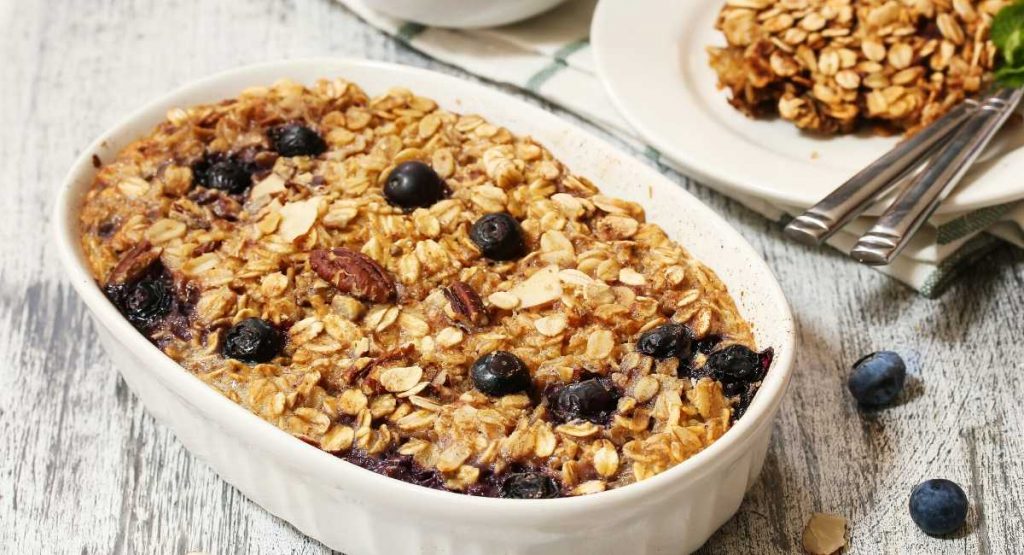
Oat Controversy
Not everyone agrees that oats should be part of your diet. Many who follow a low-carb or paleo diet tend to believe that all grains and grasses are not good for human consumption.
For example, Dr. William Davis states that oats contain super-carbohydrate and amylopectin that increase blood sugar levels. Harvard acknowledges that this is a risk, but believes the risk is materially outweighed by the benefits of oats. Harvard’s stance is supported by the Cleveland Clinic.
Further, Dr Davis cites a study that people with celiac disease can have an abnormal immune response against the oat counterparts to wheat gliadin, avenin. Note, this is not about whether or not oats are gluten free; it’s about a cross reaction to oat’s avenin protein that resemble gluten’s glutenin and gliadin proteins.
The Celiac Disease foundation concluded that a normal amount of oats are not able to induce an immune response like that of wheat, barley, or rye in the vast majority of celiac patients. It is possible that a larger amount of oats could more reliably induce an immune response; however, the 100 grams (approximately a quarter pound) per day used in this experiment represents a “significant quantity.”
These topics are sufficiently complex enough that if you have concerns you should discuss them with your doctor.
What do the experts say?
“Whether it’s steel-cut or rolled, quick-cooking or instant, oatmeal is good for you,”
Edward Giovannucci, professor of nutrition at Harvard
“Oats are a great breakfast option, and they can also help you lose weight and control your blood sugar,”
STEFANI SASSOS, MS, RDN, CSO, CDN
“Based on the existing evidence, eating whole grain oats is definitely good for our health,”
Shengmin Sang, a professor of food science and human health at North Carolina A&T State University
Healthy Oatmeal Recipes
With all the health benefits of adding oatmeal to your diet, you might have already added it to your family’s shopping list. By far the most popular oatmeal recipe for the last few years has been the the overnight oatmeal recipe.
Basic Steel Cut Overnight Oats
Ingredients
- 1 cup steel-cut oats uncooked
- 1.75 cups coconut milk
- 1 Pinch unrefined salt optional
Instructions
- Pour all ingredients in the mason jar or other container and stir until combined. Cover and store in the refrigerator for up to five days. Serve cold by portioning your desired amount into a bowl. Add any mix-ins you want. For warm oatmeal, microwave for one minute.
Notes
Nutrition
Other Oaty Recipe Goodness

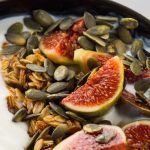
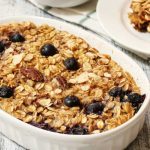
Frequently Asked Questions
How can I make oat flour?
This is as easy as it gets. Place oats in a high-power blender and blend until you obtain the consistency desired. Typically, this will take less than one minute. You might need to stir the oats in the blender a few times. This is a perfect solution for when you realize you need just a little more oat flour than you have in your pantry.
Is it okay to eat oatmeal every day?
Oats are healthy. While there is always an exception, most people’s health will improve by eating oatmeal everyday.
Can oatmeal help you lose belly fat?
Oats are high in protein and low in calories, which help you flatten your stomach. Oats take time to digest in the body and hence, tend to burn calories. This is what makes oats a good source of energy through the day and lowers your cholesterol.
What are the disadvantages of eating oats?
Oat bran and whole oats are safe for most people. Oats can cause intestinal gas and bloating. To minimize this side effect, start with a low dose and increase slowly to the desired amount.
How many calories are in oatmeal?
158 calories in 1 cup of cooked oats.
What is the macro nutrient breakdown of oats?
- Carbohydrates ~ 68%
- Protein ~ 17%
- Fat ~ 15%
Do organic oats exist?
Yes, and you should only eat organic oats. See section above.
What organic oatmeal do you recommend?
There are many good ones. We like the Nature’s Path Organic brand. My favorite flavor is their Flax Plus, but their Maple Nut is also good. I am not a fan of their Apple Cinnamon.
What Quick Oats do you recommend?
Again, there are many good options out there, but we like these organic oats from 365 Everyday Value and these from One Degree.

Conclusion
Oats are healthy, and therefore, so is oatmeal. As long as you refrain from adding heaping tablespoons of sugar, oatmeal is one of the easiest and healthiest breakfasts to make.
If you want to feel satiated for longer periods of time, then we recommend steel-cut oats, which is the kind we used in our overnight oat recipe. Or, if you want convenience, then choose quick oats.
Full of vitamins, minerals, and most importantly, fiber, you can be sure to get your family’s day off on the right foot when you serve oatmeal for breakfast.

